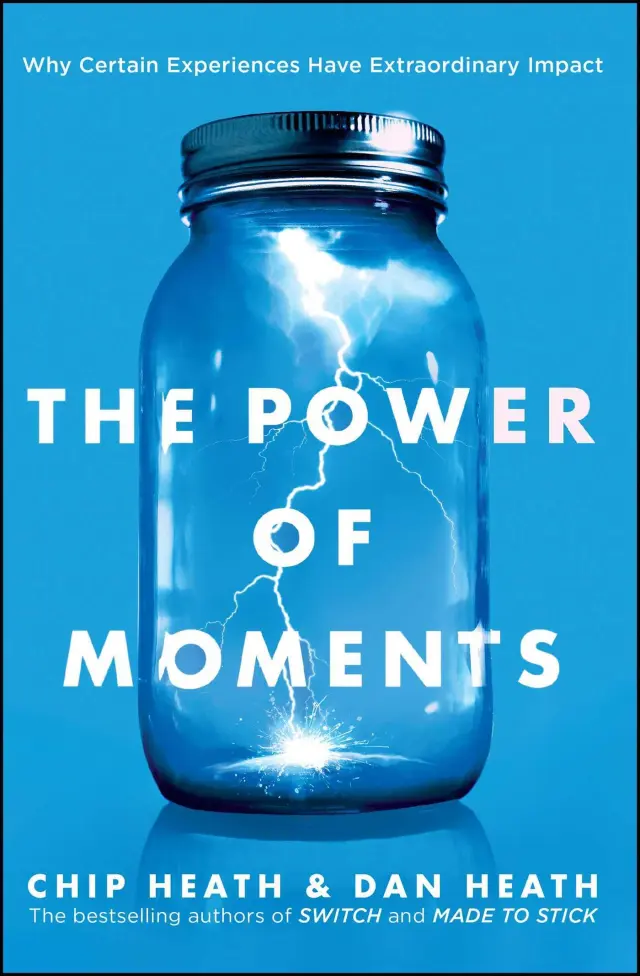
The Power of Moments: Why Certain Experiences Have
By Chip Heath and Dan Heath
Published October 5, 2025
The Power of Moments reveals why brief experiences can shape memories and change behavior—and how to engineer more of them on purpose. The Heath brothers unpack four building blocks of defining moments—Elevation, Insight, Pride, and Connection—and show how small design choices at the right time create outsized impact. From onboarding and service recoveries to family rituals and personal milestones, this is a practical playbook for turning ordinary days into unforgettable peaks that move people and organizations forward.
Key Lesson
Moments don’t just happen—thoughtful design turns small choices into defining memories.
Design Defining Moments
Book Snapshot
ISBN
9781501147760
ASIN
1501147765
Topics & Search Phrases

Full Summary
The Power of Moments explores a deceptively simple question: why do some short experiences become disproportionately meaningful? Instead of chalking it up to luck, the Heath brothers argue that memorable peaks follow patterns we can learn and apply. They organize these patterns into four elements—Elevation, Insight, Pride, and Connection (EPIC)—and illustrate them with stories that range from first-day-at-school redesigns to hospitality experiences people can’t stop talking about.
Elevation moments lift us above the everyday. They add sensory pop, surprise, and delight—the kind of details that say “someone cared.” The book shows how to design these peaks without expensive theatrics: break the script, mark the transition, and add a dash of crunch (tactile, visual, or auditory cues). A handwritten note, a welcome ritual, or a dramatic reveal can turn a routine interaction into a highlight reel memory.
Insight moments compress learning into flashes of clarity. Rather than lecturing, you stage experiences that help people trip over the truth. A manager might run a quick simulation that exposes a blind spot; a coach might ask a counterintuitive question that reframes a problem. The key is to surface disconfirming evidence in a way that feels safe and undeniable, so people author the realization themselves and remember it.
Pride moments recognize achievement and effort. Recognition works best when it’s specific, timely, and tied to values. The Heaths recommend multiplying milestones: break long journeys into visible stages and celebrate progress along the way. That approach sustains motivation because the next win is always within reach. For teams, share credit publicly and invite peers to participate—social recognition is a force multiplier.
Connection moments deepen belonging. Shared struggle, inside jokes, and rituals all bond people. Leaders can create micro-rituals at key moments—first-day welcomes, project kickoffs, service recoveries—that say, “you’re one of us.” The book’s best examples show that connection doesn’t require long speeches; it requires thoughtfulness at the right time.
Together, the EPIC framework becomes a practical checklist. When planning an onboarding, a product launch, or even a family celebration, ask: how might we add elevation? What could create insight? Where can we recognize pride? How can we strengthen connection? Small, well-placed answers add up to experiences people remember—and act on—long after.
See also: The Power of Moments: Why Certain Experiences Have, Influence: The Psychology of Persuasion, The Hard Thing About Hard Things
Key Takeaways
- Design for EPIC: Elevation, Insight, Pride, Connection.
- Break the script and mark transitions to create peaks.
- Stage experiences that help people trip over the truth.
- Multiply milestones to sustain motivation and pride.
- Build belonging with small, repeated rituals.